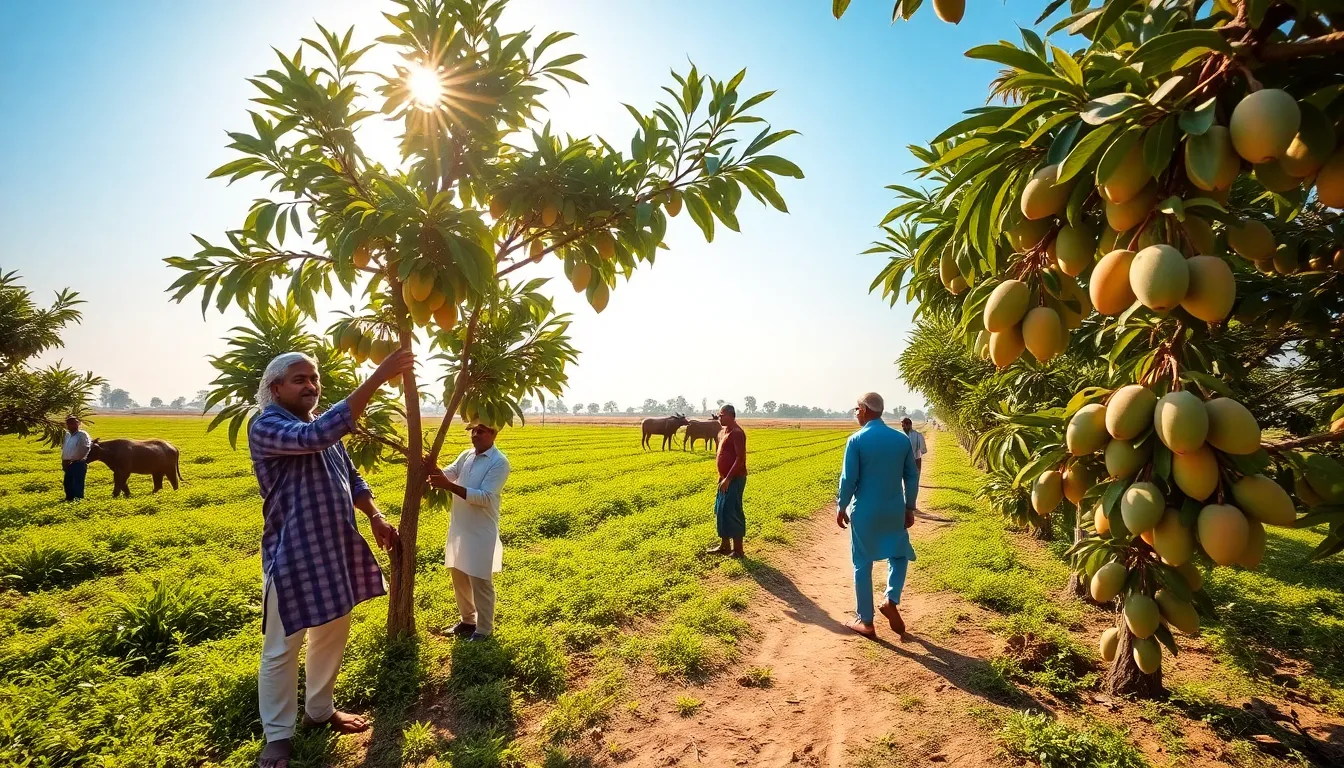Mango is known as the ‘King of Fruits’ and is loved by many. However, mango trees often face a problem called alternate bearing. This means that trees produce a lot of fruit one year but very little or none the next year. This pattern can be frustrating for farmers as it affects their income. Fortunately, farmers can use different techniques to manage this issue and grow more mangoes every year.
One of the main reasons for alternate bearing is the type of mango variety planted. Some mango varieties are known to produce fruit every year, while others naturally have a biennial cycle, meaning they produce heavy crops one year and lighter crops the next. For example, regular bearing varieties like Amrapali and Banganapalli can help farmers achieve consistent yields.
In addition to selecting the right variety, proper orchard management is crucial. This includes practices like pruning, fertilization, and pest control. Pruning is especially important as it helps manage excessive vegetative growth. If trees grow too many leaves, they may not have enough energy to produce flowers and fruits. Therefore, light pruning should be done after harvesting to allow sunlight and air to reach all parts of the tree.
Fertilization is another key factor in managing alternate bearing. Farmers should use well-rotted farmyard manure and apply fertilizers in two split applications. Monthly, each tree should receive about 1.5 kilograms of nitrogen, 0.75 kilograms of phosphorus, and 1.5 kilograms of potash. This nutrient mix helps maintain a balance between growth and fruit production.
Moreover, using foliar sprays can be very beneficial. Spraying trees with a solution that includes potassium nitrate or potassium dihydrogen phosphate can support flowering and fruit set. It is recommended to spray three times at monthly intervals.
Another innovative method involves the use of a growth regulator called paclobutrazol. This chemical treatment can be applied to the soil around the tree in September and October. It helps lower the levels of gibberellins, a plant hormone that can inhibit flowering, and increases cytokinins which promote flower development.
Pest management is also vital for ensuring a good crop. One of the most dangerous pests is the mango hopper, which attacks flowers during the flowering season. Farmers should spray insecticides like Carbaryl or Endosulfan to protect the flowers and ensure fruit set. It is also important to monitor for diseases such as powdery mildew, which can damage flowers. Spraying with wettable sulphur can help control this problem.
Understanding the tree’s growth cycle is essential for successful mango farming. By providing the right care—light pruning, balanced nutrition, timely growth regulator applications, and pest management—farmers can effectively manage alternate bearing and increase their mango yields. This allows for more predictable harvests and greater income stability.
In conclusion, while alternate bearing can be a challenge for mango farmers, there are effective strategies to manage it. By implementing these practices, farmers can ensure a consistent supply of mangoes every year, making the most out of their orchards. With dedication and the right techniques, the ‘King of Fruits’ can reign supreme in every season.

